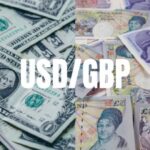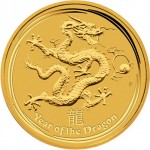US dollar traded little changed and in proximity to highs unseen in eight weeks against the Japanese yen on Wednesday, as speculation mounted that the Federal Reserve Bank will consider a scale back of its stimulus early next year, while Japanese machine orders dropped more than initially projected in September.
Having reached its highest point since September 13th at 99.80 yesterday, USD/JPY slipped to a session low at 99.43 at 3:25 GMT on Wednesday. The pair subsequently consolidated at 99.56, losing 0.08% for the day. Support was likely to be found at November 11th low, 98.91, while resistance was to be encountered at November 12th high, 99.80.
Most recent economic data, released out of the United States, including non-farm payrolls and Gross Domestic Product, added to the case that tapering of stimulus may occur soon. Federal Reserve Bank policymakers will probably reduce the monthly pace of asset purchases to 70 billion USD at central bank’s policy meeting on March 18th-19th from the current pace of 85 billion USD, according to the median estimate of 32 respondents in a survey, conducted by Bloomberg on November 8th.
“The Fed may taper stimulus if there are series of positive U.S. economic data, but it’s unlikely for the them to raise policy rates anytime soon,” said Hiroshi Yoshida, a senior portfolio manager in Tokyo at MassMutual Life Insurance Co., cited by the same media. “Investors are reducing dollar-yen longs after the pair’s advance was capped below 100.”
However, Federal Reserve President for Atlanta Dennis Lockhart said on Tuesday that overall economic situation in the United States remained mixed, as concerns persisted that expectations of a stronger economic growth next year will probably not be met. According to Lockhart, it was difficult to assess whether economic development was in a positive or a negative manner, with overall state pointing a weak growth.
Meanwhile, a report showed that machine orders in Japan, an indicator providing clues for corporate investments in capital assets, decreased 2.1% in September on a monthly basis, partially neutralizing the 5.4% gain, recorded in August. Experts had expected a lesser decrease in orders, 2.0% in September. Japanese government announced that, considering these results, machine orders in the country were reviving. Economists predict that companies are likely to increase their orders due to expanding corporate profits and amid expectations that exports from the country will grow.
Bank of Japan (BoJ) board member Ryuzo Miyao, at a conference with business leaders in Matsumoto City on Wednesday, said that the downside risk for Japanese economic recovery from years of deflation towards growth was slightly higher that the upside risk. Actions by the Federal Reserve could have a substantial impact upon Japan, according to Miyao. It is of utmost importance that the annual inflation rate in Japan, measured by the annual increase in core consumer prices, will surpass 1% during fiscal 2014, so that BoJ could achieve its 2% objective, which provides price stability. Miyao also said, that the bank should keep a close eye on the risk, that the timing of a global economic recovery may be postponed by another Congressional stalemate over the fiscal policy in the United States. Bank of Japan policymakers are scheduled to meet on November 20th-21st.
Elsewhere, the yen was gaining against the euro, with EUR/JPY pair down 0.14% on a daily basis to trade at 133.69 at 8:57 GMT. GBP/JPY pair was also losing ground, down 0.24% to trade at 158.12 at 8:58 GMT.





